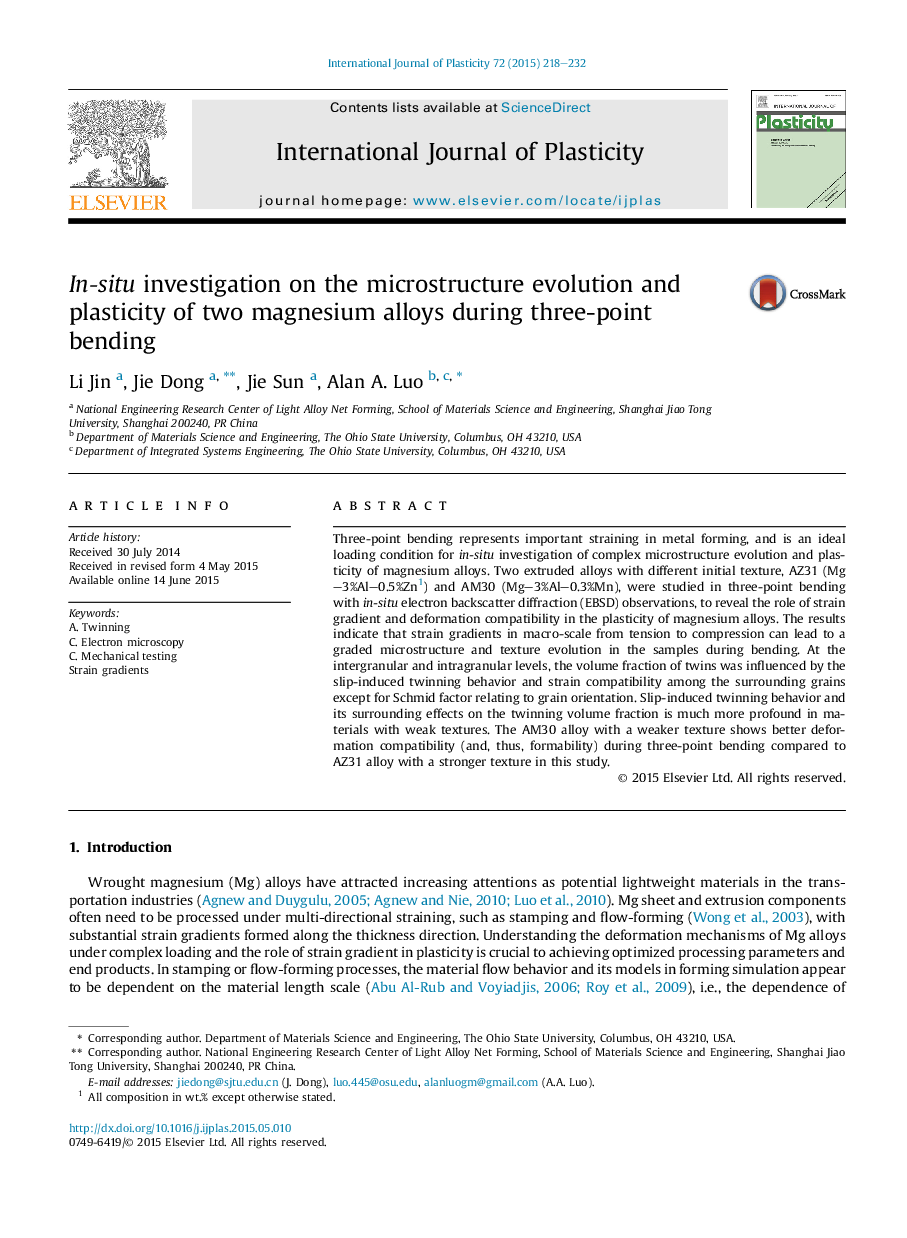| Article ID | Journal | Published Year | Pages | File Type |
|---|---|---|---|---|
| 784383 | International Journal of Plasticity | 2015 | 15 Pages |
•Strain gradients lead to graded microstructure and texture, affecting plasticity.•The twin volume fraction is influenced by slip-induced twinning behavior and strain compatibility among surrounding grains.•Slip-induced twinning behavior and its surrounding effects is much more profound in materials with weak texture.•The AM30 alloy with weaker texture shows better deformation compatibility than AZ31 alloy.
Three-point bending represents important straining in metal forming, and is an ideal loading condition for in-situ investigation of complex microstructure evolution and plasticity of magnesium alloys. Two extruded alloys with different initial texture, AZ31 (Mg–3%Al–0.5%Zn 1) and AM30 (Mg–3%Al–0.3%Mn), were studied in three-point bending with in-situ electron backscatter diffraction (EBSD) observations, to reveal the role of strain gradient and deformation compatibility in the plasticity of magnesium alloys. The results indicate that strain gradients in macro-scale from tension to compression can lead to a graded microstructure and texture evolution in the samples during bending. At the intergranular and intragranular levels, the volume fraction of twins was influenced by the slip-induced twinning behavior and strain compatibility among the surrounding grains except for Schmid factor relating to grain orientation. Slip-induced twinning behavior and its surrounding effects on the twinning volume fraction is much more profound in materials with weak textures. The AM30 alloy with a weaker texture shows better deformation compatibility (and, thus, formability) during three-point bending compared to AZ31 alloy with a stronger texture in this study.
